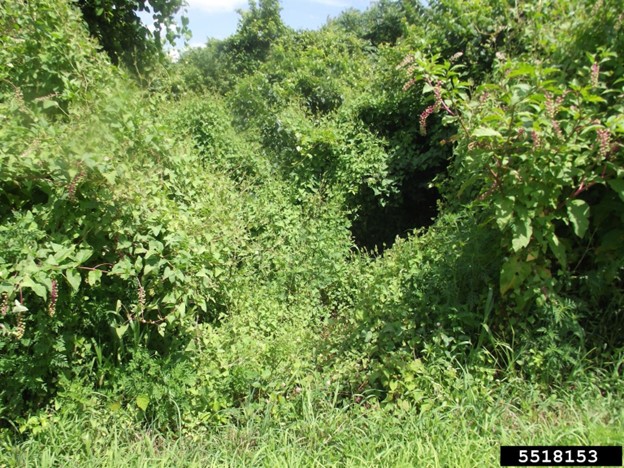Priority Plant Patrol encourages community scientists to watch for invasive species
Community members can monitor sentinel trees for invasive forest pests and survey local hiking trails for priority list invasive forest plants through the Michigan Eyes on the Forest Priority Plant Patrol Program.

Michigan’s forested ecosystems are one of the natural gems in the state. Residents and visitors alike cherish the forestland for recreation and relaxation, and in some cases, economic stability as tourism dollars support many rural communities. It’s a well-known fact that spending time in healthy forests improves our well-being and quality of life.
Maintaining the health of our forested ecosystem is an important task, and one way we can all contribute is by preventing the spread of invasive species. In Michigan, there are Cooperative Invasive Species Management Areas, or CISMAs, which are organizations that provide education and removal of various invasive species that have a potential to threaten both land-based (terrestrial) and water-based (aquatic) habitats. Each CISMA has the responsibility to monitor multi-county areas and there are far too many established invasive plant populations for CISMAs to tackle on their own.
What’s so bad about invasive species?
Invasive species are defined as non-native species that cause harm to the environment because of their ability to quickly reproduce and take over habitats that would normally support native trees and other plants. Invasive plants also produce fruits that contain less nutrients for wildlife and lack the established relationships of native plants. For example, native forest shrubs, like spicebush, support native caterpillar and other insect populations while the fall berries support the flight of migrating birds. Consequently, invasive shrubs fail to support our native wildlife populations and can become a detriment to native ecosystems when present in large numbers. A complete overview of invasive plants in Michigan’s ecosystems can be found in the “Field Identification Guide to Invasive Plants in Michigan’s Natural Communities” published by the Michigan Natural Features Inventory.
The key to effectively controlling invasive plants is to detect them early so that a rapid response to eliminate the species can follow. Of course, there is an acronym for that! EDRR: Early Detection Rapid Response. When invasive species are not detected early, they become established, making it much more difficult (sometimes impossible!) and more costly to eradicate it from the natural environment.
Get involved
The Michigan Eyes on the Forest Sentinel Tree Network was created in 2016 by Michigan State University Extension to create proactive awareness of invasive forest pests. In 2024, a grant from the U.S. Forest Service allowed the program to expand its reach to also include five invasive forest plants that are not well established in Michigan. The Priority Plant Patrol (PPP) provides a platform for concerned citizens to learn more about the five priority plants, and to digitally record hikes or walks to look for the priority plants.

Ideally, most walks will find nothing! While this seems like an exercise in futility, negative detections actually help CISMAs know which areas have been searched and are free of the priority plants. This knowledge allows professionals to concentrate their efforts by focusing on areas not yet visited in search of priority plants.
The Michigan Eyes on the Forest Priority Plants include:
- Japanese stiltgrass
- Lesser celandine
- Himalayan balsam
- Mile-a-minute weed (with focus on the Lower Peninsula)
- Butterbur, or Pestilence wort (with focus on the Upper Peninsula)

We also ask community scientists participating to map any occurrence of tree of heaven through the PPP. Tree of heaven is a problem for two reasons: not only is it a highly invasive tree, but it is also the host of an invasive planthopper called spotted lanternfly. Spotted lanternfly was detected at a site in Oakland County in 2022. While control efforts are underway, the rapid spread of the invasive pest in the eastern United States means it will likely do the same in Michigan. If it does, the locations of tree of heaven could be important for local control. You can read more about tree of heaven and its relationship to spotted lanternfly in Michigan State University Extension’s bulletin, “A Tale of Two Invaders: Tree of Heaven and Spotted Lanternfly.”
Spread the word
Both the Michigan Eyes on the Forest Sentinel Tree Network and the Priority Plant Patrol are focused on proactive awareness to slow the spread of invasive species. Instructions for collecting and entering data are included on the website. Once you learn how to collect data, we hope you will show your friends and family so that we can all work together to prevent the spread and establishment of invasive species. And don’t forget to learn more about and support your local Cooperative Invasive Species Management Area. CISMAs are your local experts for invasive species management.
If you have any questions about the article or its content, please contact Julie Crick, MSU Extension natural resources educator, at crickjul@msu.edu.



 Print
Print Email
Email




